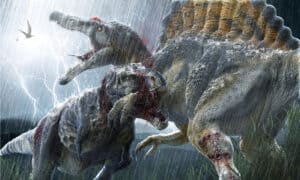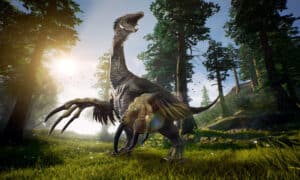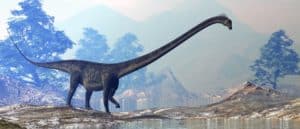While it used to be difficult to find more than a few dinosaurs whose names started with the letter Z, there are now at least 23 of them! A big reason for this proliferation is a number of discoveries made in China in recent decades, and the subsequent use of Chinese names for them. Read on to learn all their names, including how to pronounce them and what they mean.
1. Zalmoxes
Pronunciation: zal-mox-ees
Name means: named after the Dacian deity Zalmoxis
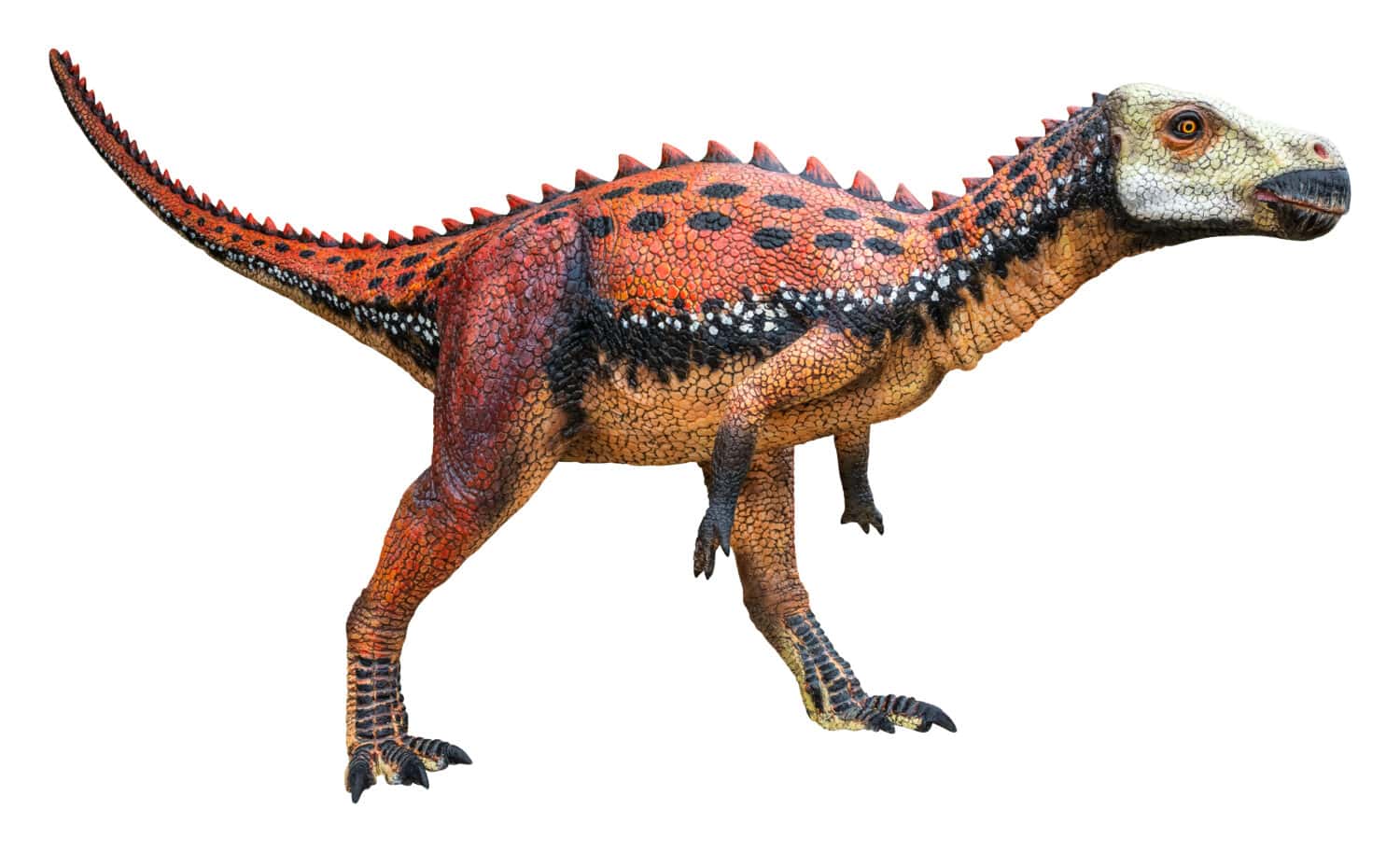
In addition to the type species
Zalmoxes robustus,
a second species
Zalmoxes shqiperorumwas also named in 2003.
©YuRi Photolife/Shutterstock.com
Zalmoxes is a genus of habdodontid ornithopod dinosaur from the Maastrichtian age of the Late Cretaceous period. Researchers named the type species Zalmoxes robustus in 2003 from fossils found in the Sânpetru Formation in Transylvania, Romania. It was a bipedal herbivore with an estimated length of 2.5 m (8.2 ft).
2. Zanabazar
Pronunciation: zah-nah-bah-zar
Name means: named after Öndör Gegeen Zanabazar
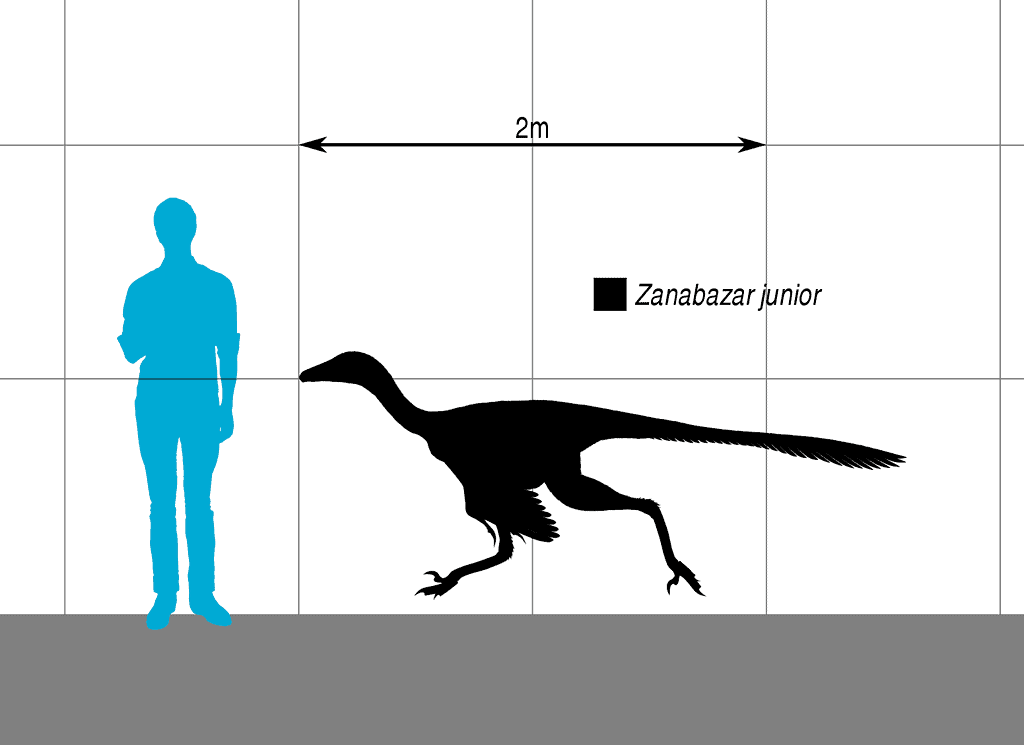
‘s namesake Öndör Gegeen Zanabazar (1635-1723) was the first spiritual head of Buddhism in Mongolia.
Zanabazar is a genus of troodontid dinosaur from the Maastrichtian age of the Late Cretaceous period. Researchers named the type species Zanabazar junior in 2009 from fossils found in the Nemegt Formation in the Gobi Desert, Mongolia. It was a bipedal carnivore with an estimated length of 3 m (9.8 ft).
3. Zapalasaurus
Pronunciation: zap-al-ah-sor-us
Name means: “Zapala lizard”
Zapalasaurus is a genus of diplodocoid sauropod dinosaur from the Barremian/Early Aptian ages of the Early Cretaceous period. Researchers named the type species Zapalasaurus bonapartei in 2006 from fossils found in the La Amarga Formation of the Neuquén Basin, Argentina. It was a long-necked quadrupedal herbivore of undetermined length.
4. Zapsalis
Pronunciation: za-sah-lis (silent ‘p’)
Name means: “thorough scissors”
Zapsalis is a genus of dromaeosaurine theropod dinosaur from the Campanian to Maastrichtian ages of the Late Cretaceous period. Researchers named the type species Zapsalis abradens in 1876 from fossil teeth found in the Dinosaur Park Formation in Canada. It was a bipedal carnivore of undetermined length.
5. Zaraapelta
Pronunciation: zah-raah-pel-tah
Name means: “hedgehog shield”
Zaraapelta is a genus of ankylosaurid thyreophoran dinosaur from the Campanian age of the Late Cretaceous period. Researchers named the type species Zaraapelta nomadis in 2014 from a skull found in the Barun Goyot Formation in Mongolia. The genus name was formed by combining the Mongolian word for hedgehog, zaraa, and the Greek word peltè, a small shield, in reference to the overall prickly appearance of typical ankylosaur armor. It was a quadrupedal herbivore of undetermined length.
6. Zby
Pronunciation: zb-ee
Name means: named after Georges Zbyszewski
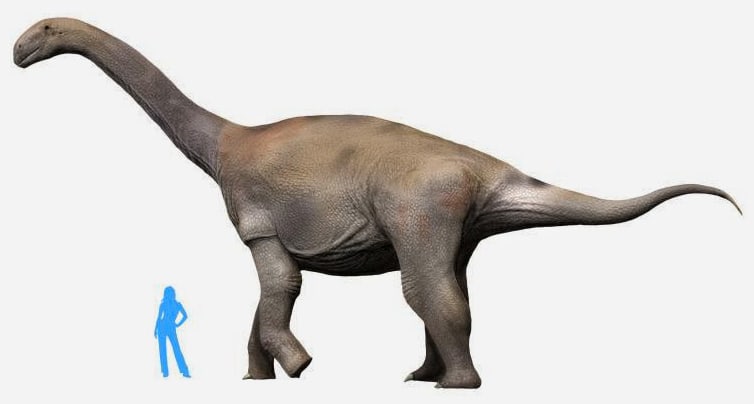
is named for Russian geologist and paleontologist Georges Zbyszewski (1909-1999).
©Nobu Tamura email:[email protected] http://spinops.blogspot.com/ / CC BY-SA 4.0 – Original / License
Zby is a genus of turiasaurian sauropod dinosaur from the Kimmeridgian age of the Late Jurassic period. Researchers named the type species Zby atlanticus in 2014 from fossils found in the Lourinhã Formation in Portugal. It was a large quadruped herbivore with an estimated length of 16 – 18 m (52.5 – 59.1 ft).
7. Zephyrosaurus
Pronunciation: zef-e-ir-sor-us
Name means: “west wind lizard”

“Zephyr” derives from the name Zephyrus, a Greek wind god who was the personification of the west wind.
Zephyrosaurus is a genus of orodromine ornithischian dinosaur from the Albian age of the Cretaceous period. Researchers named the type species Zephyrosaurus schaffi in 1980 from fossils found in the Cloverly Formation in Montana, USA. It was a bipedal herbivore with an estimated length of 1.8 m (5.9 ft).
8. Zhanghenglong
Pronunciation: jahng-heng-long
Name means: “Zhang Heng’s dragon”
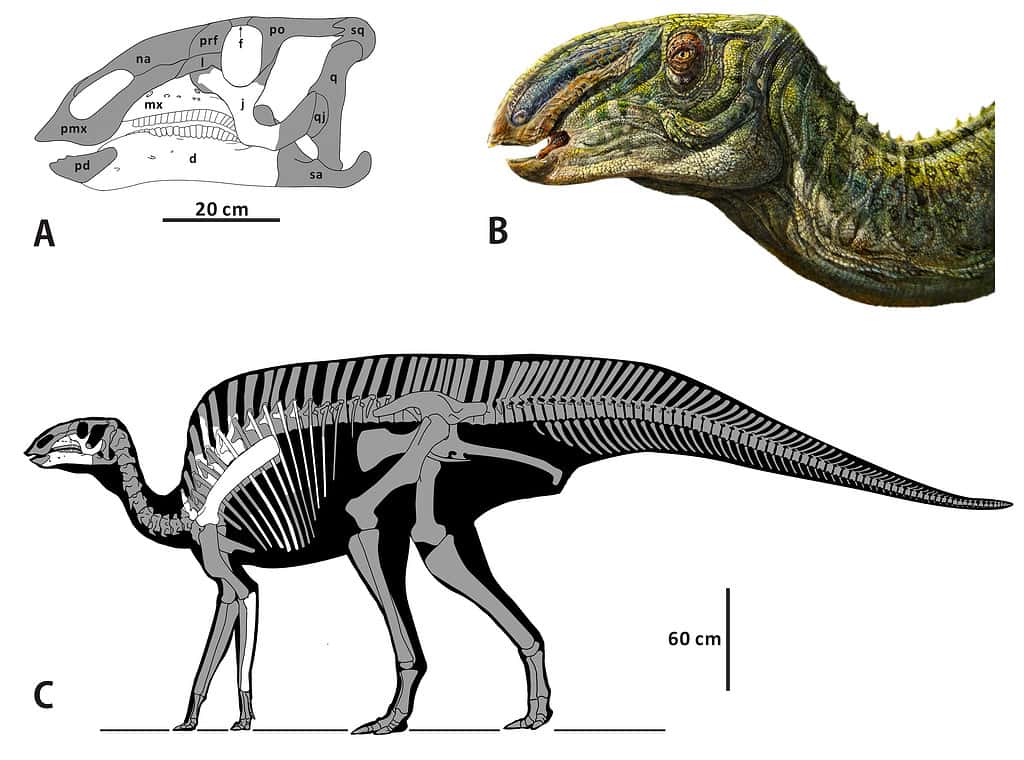
Zhang Heng (78–139 CE) was a Chinese polymath from the Han dynasty era.
Zhanghenglong is a genus of hadrosauroid iguanodont dinosaur from the Santonian age of the Late Cretaceous period. Researchers named the type species Zhanghenglong yangchengensis in 2014 from fossils found in the Majiacun Formation in Henan Province, China. It was a quadrupedal herbivore with an estimated length of 5.5 – 6 m (18.0 – 19.7 ft).
9. Zhejiangosaurus
Pronunciation: juhr-jiahng-o-sor-us
Name means: “Zhejiang lizard”
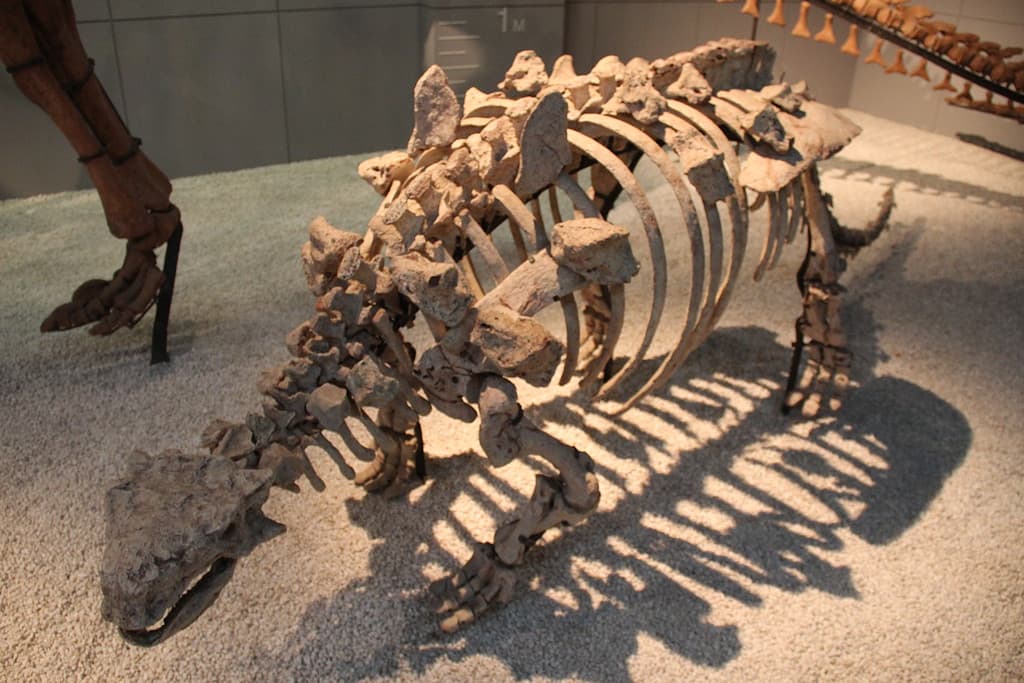
‘s species epithet means “from Lishui,” the city where the fossil was found.
Zhejiangosaurus is a genus of nodosaurid ankylosaurian dinosaur from the Cenomanian age of the Late Cretaceous period. Researchers named the type species Zhejiangosaurus lishuiensis in 2007 from fossils found in Lishui, Zhejiang Province, China. It was a quadrupedal herbivore with an estimated length of 4.5 m (14.8 ft).
10. Zhenyuanlong
Pronunciation: jen-yoo-en-long
Name means: “Zhenyuan’s dragon”
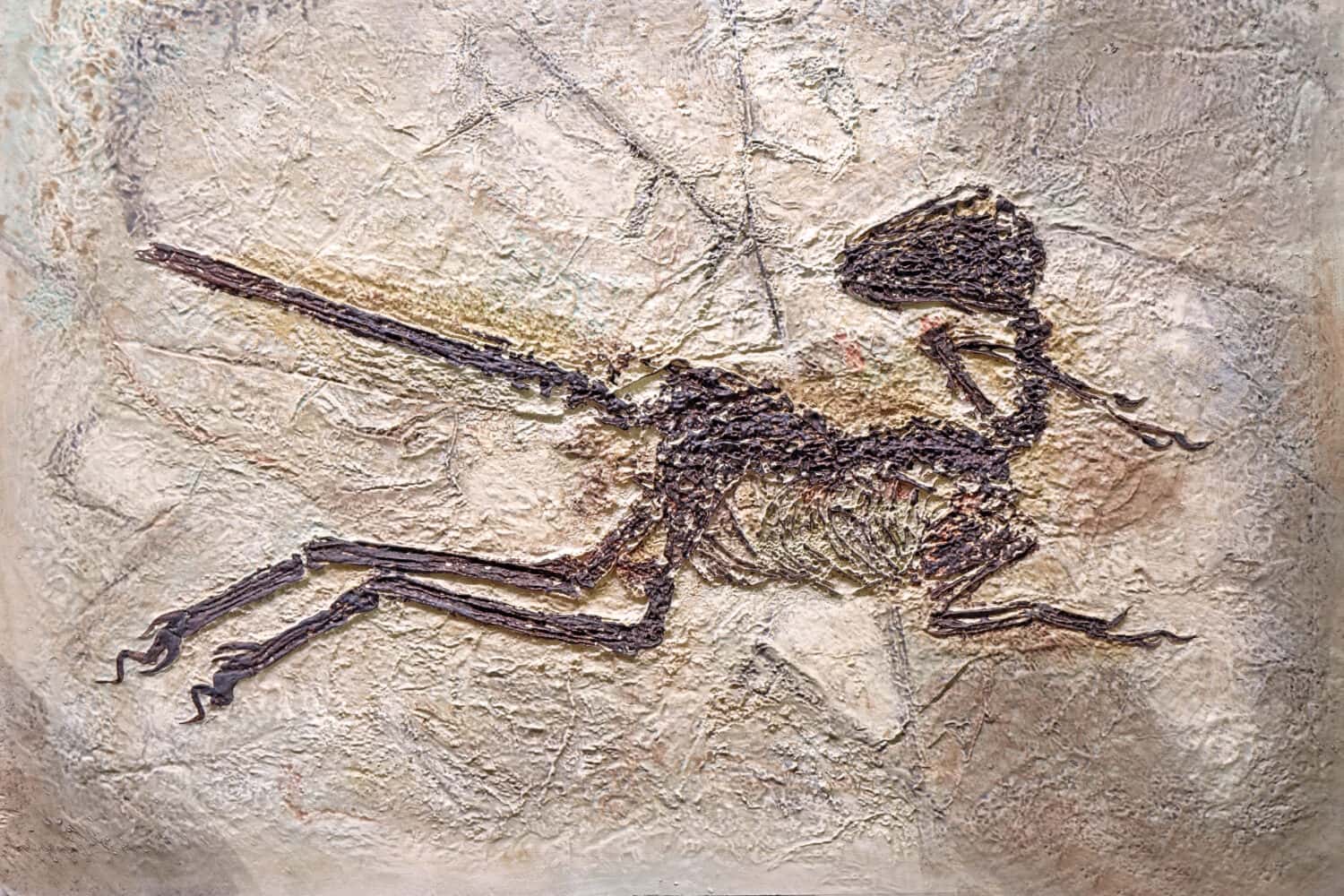
is named after Zhenyuan Sun from the Jinzhou Paleontological Museum.
©Mark Brandon/Shutterstock.com
Zhenyuanlong is a genus of dromaeosaurid theropod dinosaur from the Aptian age of the Early Cretaceous period. Researchers named the type species Zhenyuanlong suni in 2015 from a nearly complete preserved skeleton found in the Yixian Formation of Liaoning Province, China. It was a feathered bipedal carnivore with an estimated length of 2 m (6.6 ft).
11. Zhongjianosaurus
Pronunciation: jawng-jiahn-o-sor-us
Name means: “Zhongjian’s lizard”
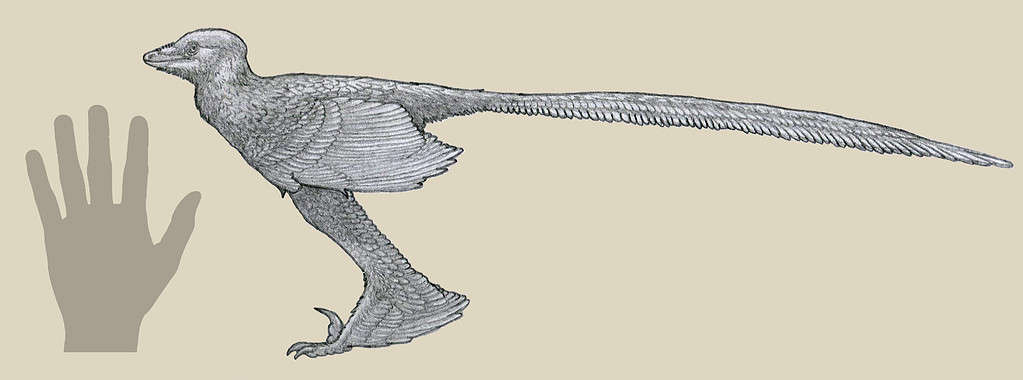
“Zhongjian’s lizard” is named for Yang Zhongjian (1897-1979), known as the “Father of Chinese Vertebrate Paleontology”.
Zhongjianosaurus is a genus of microraptoran dromaeosaurid dinosaur from the Barremian to Aptian ages of the Early Cretaceous period. Researchers named the type species Zhongjianosaurus yangi in 2017 from fossils found in the Yixian Formation in China. It was a small feathered and winged theropod estimated to have been only about 25 cm (9.8 in) tall and just 310 g (10.0 oz) in weight, making it the smallest microraptor currently known.
12. Zhongyuansaurus
Pronunciation: jawng-yoo-en-sor-us
Name means: “Zhongyuan lizard”
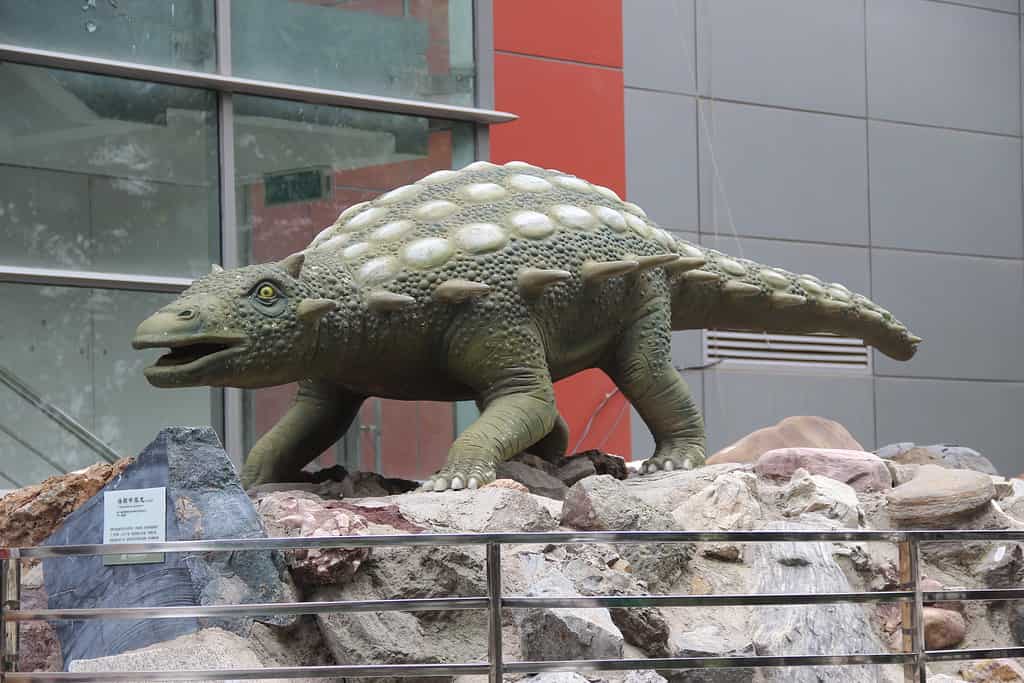
Like many of the names on this list,
Zhongyuansaurus luoyangensisis named for the locality in which the first specimen was found.
Zhongyuansaurus is a genus of ankylosaurid dinosaur from the Aptian–Albian ages of the Early Cretaceous period. Researchers named the type species Zhongyuansaurus luoyangensis in 2007 from fossils found in the Haoling Formation in Luoyang, Henan, China in an area known as the Zhongyuan (Central Plain) region. It was a quadrupedal herbivore of undetermined length.
13. Zhuchengceratops
Pronunciation: joo-chuhng-seh-rah-tops
Name means: “Zhucheng horned face”
Zhuchengceratops is a genus of leptoceratopsid ceratopsian dinosaur from the Campanian age of the Late Cretaceous period. Researchers named the type species Zhuchengceratops inexpectus in 2010 from fossils found in the Wangshi Group in Zhucheng County, Shandong, China. It was a quadrupedal herbivore with an estimated length of 2.5 m (8.2 ft).
14. Zhuchengtitan
Pronunciation: joo-chuhng-tie-tan
Name means: “Zhucheng Titan”
Zhuchengtitan is a genus of titanosaurian sauropod dinosaur from the Campanian age of the Late Cretaceous period. Researchers named the type species Zhuchengtitan zangjiazhuangensis in 2017 from fossils found in the Xingezhuang Formation in Shandong Province, China. It was a large quadrupedal herbivore of uncertain size.
15. Zhuchengtyrannus
Pronunciation: joo-chuhng-tih-ran-us
Name means: “Zhucheng tyrant”
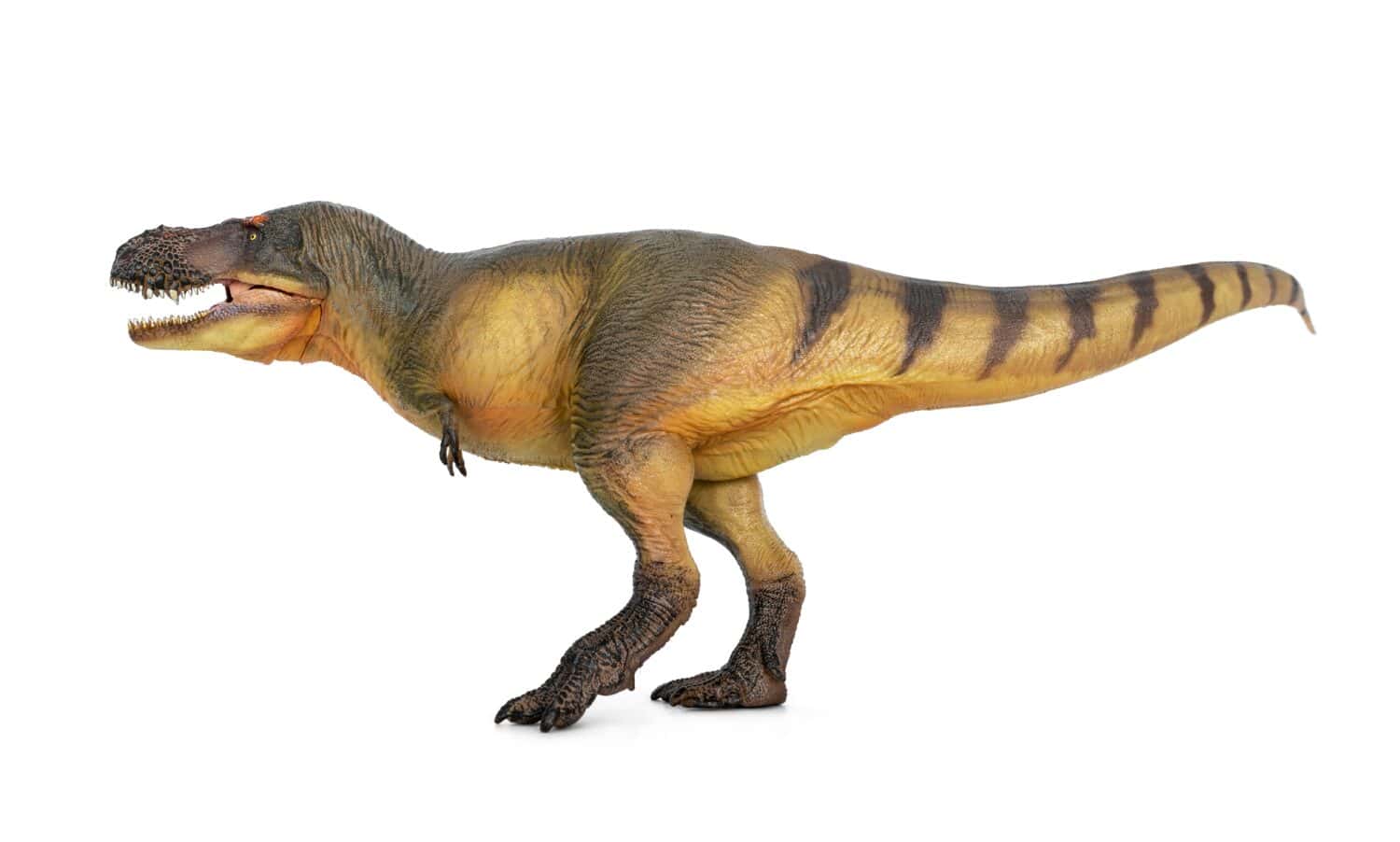
‘ species epithet refers to its relatively large size for a tyrannosaur.
©Ton Bangkeaw/Shutterstock.com
Zhuchengtyrannus is a genus of tyrannosaurid theropod dinosaur from the Maastrichtian age of the Late Cretaceous period. Researchers named the type species Zhuchengtyrannus magnus in 2011 from fossils found in the Wangshi Group in Zhucheng, Shandong, China. It was a bipedal carnivore with an estimated length of 10 m (33.0 ft).
16. Ziapelta
Pronunciation: tsee-ah-pel-tah
Name means: “Zia shield”
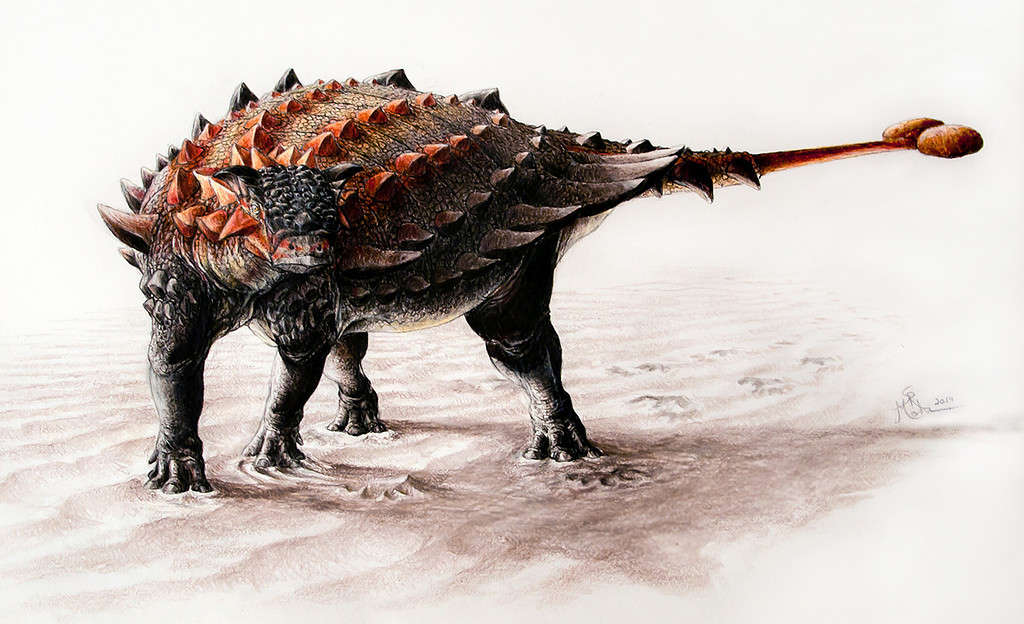
is named for the sun symbol of the Zia Pueblo, which is featured on the New Mexico state flag.
©Illustration by Sydney Mohr / CC BY 2.5 – Original / License
Ziapelta is a genus of ankylosaurid dinosaur from the Campanian age of the Late Cretaceous period. Researchers named the type species Ziapelta sanjuanensis in 2014 from fossils found in the Kirtland Formation in the San Juan Basin in New Mexico, USA. It was a quadrupedal herbivore with an estimated length of 4.6 – 6.1 m (15.0 – 20.0 ft).
17. Zigongosaurus
Pronunciation: dz-gawng
Name means: “Zigong Lizard”
Zigongosaurus is a genus of sauropod dinosaur from the Middle to Late Jurassic period. Researchers named the type species Zigongosaurus fuxiensis in 1976 from fossils found in the Shaximiao Formation in Zigong, Sichuan, China. It was a long-necked quadrupedal herbivore with an estimated length of 15 m (49.2 ft).
18. Zizhongosaurus
Pronunciation: dz-jawng-o-sor-us
Name means: “Zizhong lizard”
Zizhongosaurus is a genus of sauropod dinosaur from the Toarcian age of the Early Jurassic period. Researchers named the type species Zizhongosaurus chuanchengensis in 1983 from fossils found in Zizhong County, Sichuan, China. The species epithet refers to the town of Chuancheng. It was a large quadrupedal herbivore of undetermined size.
19. Zuniceratops
Pronunciation: Zoo-nee-seh-rah-tops
Name means: “Zuni horned face”
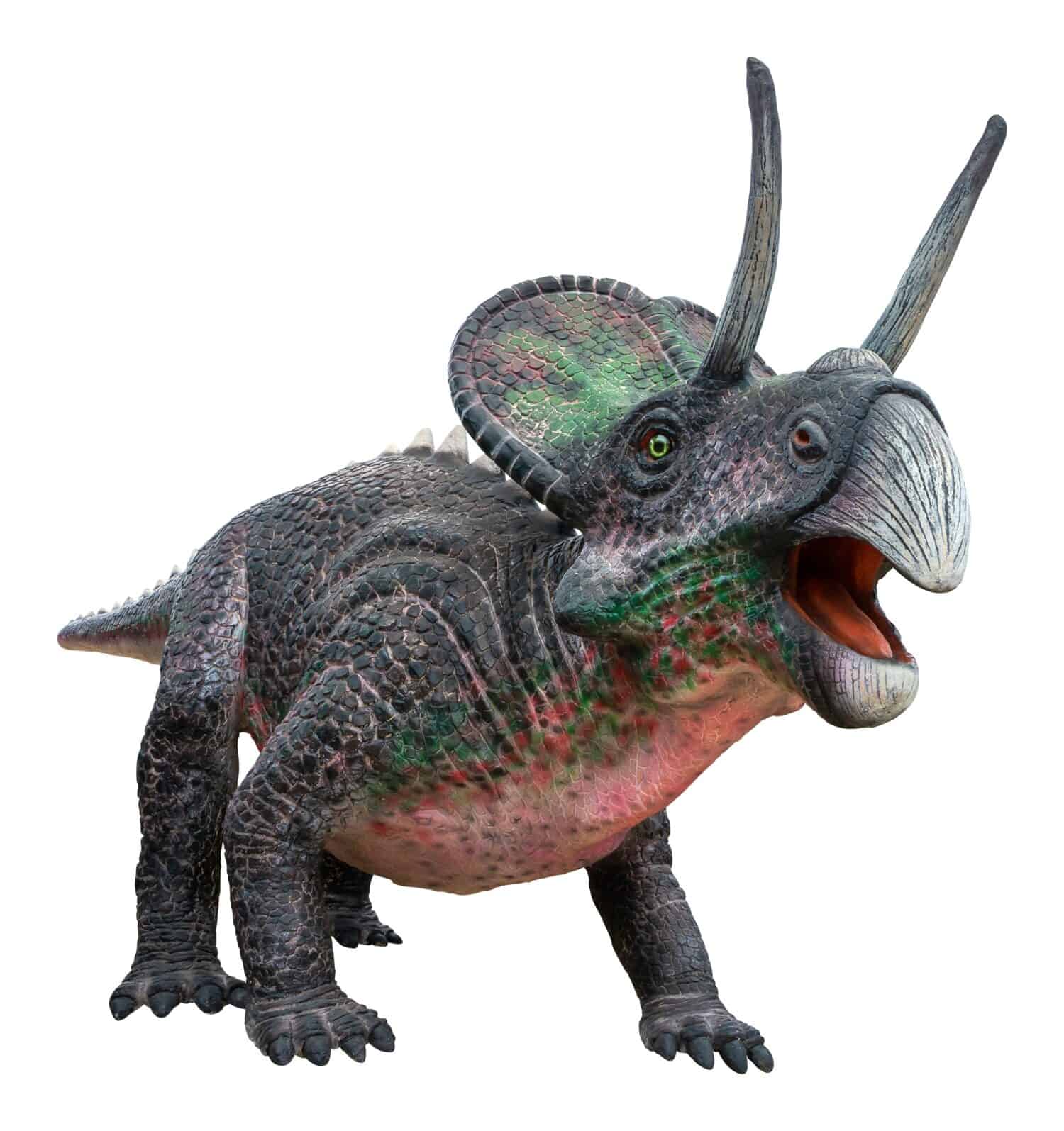
‘s species epithet honors paleontologist Douglas G. Wolfe’s son, Christopher James Wolfe, who first discovered the fossils in 1996 when he was just eight years old!
©YuRi Photolife/Shutterstock.com
Zuniceratops is a genus of ceratopsian dinosaur from the Turonian age of the Late Cretaceous Period. Researchers named the type species Zuniceratops christopheri in 1998 from fossils found in the Moreno Hill Formation in New Mexico, USA. It was a quadrupedal herbivore with an estimated length of 3.5 meters (11.2 ft).
20. Zuolong
Pronunciation: “zoo-o-long”
Name means: “Zuo’s dragon”
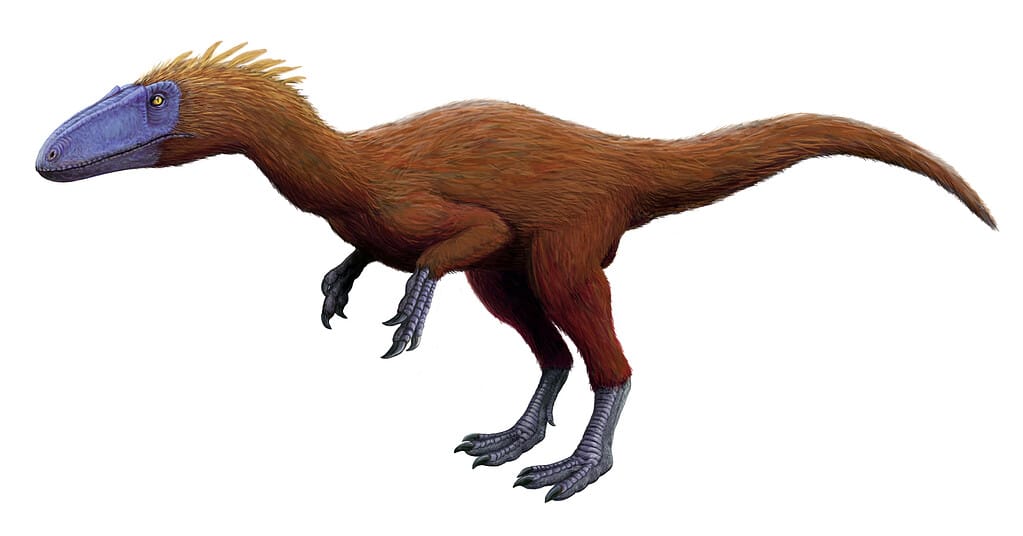
“Zuo’s dragon” is named after General Zu Zōngtáng, also known as “General Tso.”
©FunkMonk (Michael B. H.) / CC BY-SA 3.0 – Original / License
Zuolong is a genus of tetanuran theropod dinosaur from the Oxfordian age of the Late Jurassic period. Researchers named the type species Zuolong salleei in 2010 from fossils found in the Shishugou Formation in Xinjiang, China. It was a bipedal carnivore with an estimated length of 3.1 m (10.2 ft).
21. Zuoyunlong
Pronunciation: zoo-o-yoon-long
Name means: “Zuoyun dragon”
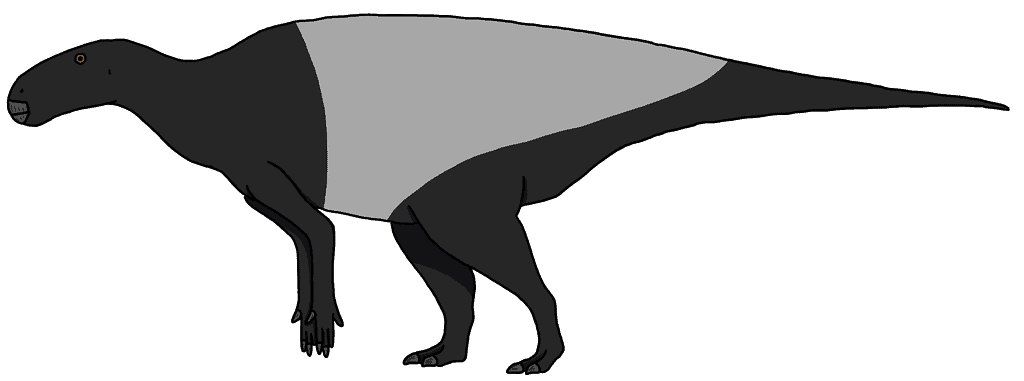
‘s species epithet honors Chinese paleontologist Huang Weilong.
Zuoyunlong is a genus of hadrosauroid dinosaur from the Cenomanian age of the Late Cretaceous period. Researchers named the type species Zuoyunlong huangi in 2015 from fossils found in the Zhumapu Formation in Zuoyun County, Shanxi, China. It was a bipedal herbivore with an estimated length of 8 m (26.2 ft).
22. Zupaysaurus
Pronunciation: zoo-pay-sor-us
Name means: “devil lizard”
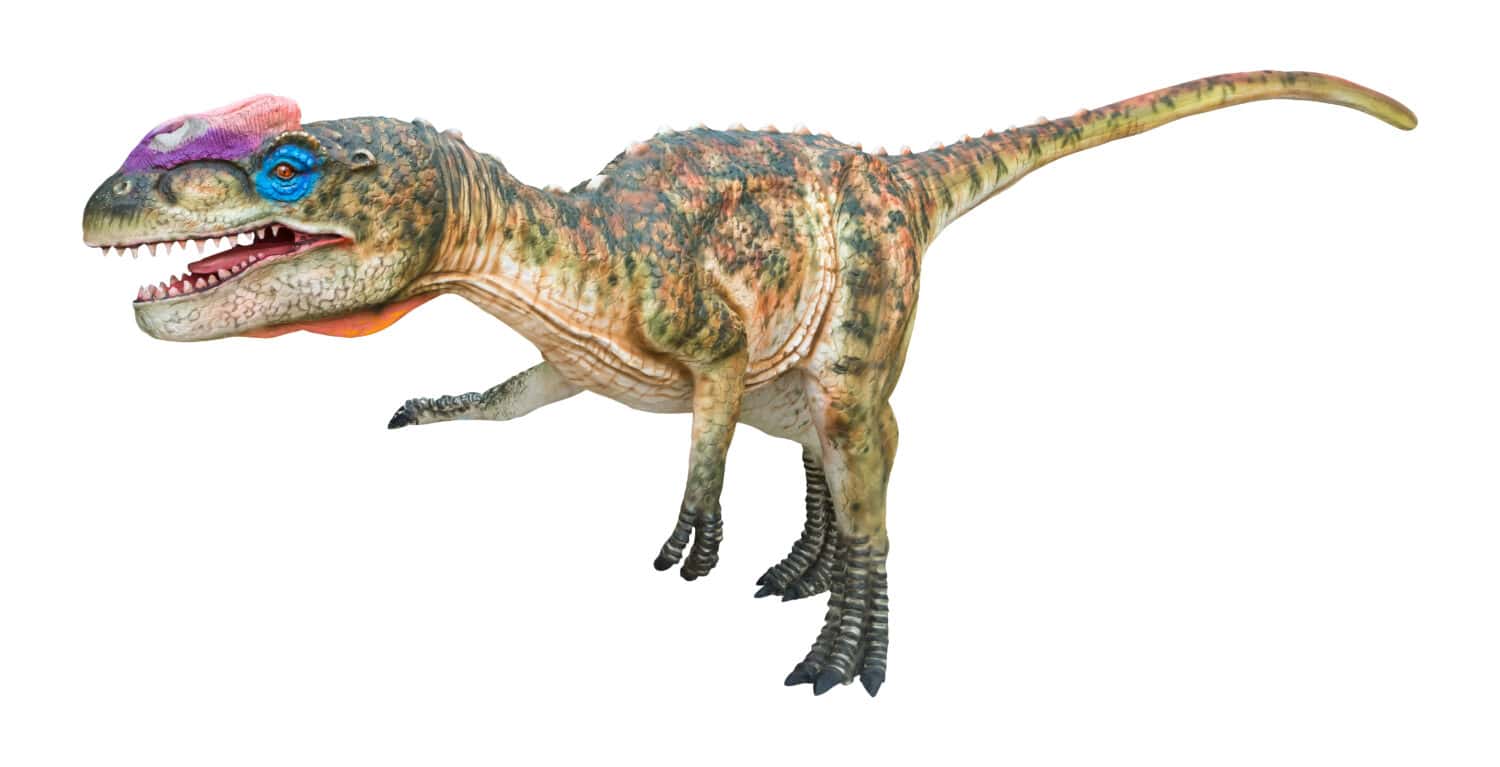
Zupaysaurusgets its name from the Quechua name “
Supay,” originally the name of the god of death and ruler of the underworld in Incan mythology, and in modern times another name for
Diablo(Devil).
©YuRi Photolife/Shutterstock.com
Zupaysaurus is a genus of theropod dinosaur from the Norian age of the Late Triassic period. Researchers named the type species Zupaysaurus rougieri in 2003 from fossils found in the Los Colorados Formation in Argentina. It was a bipedal carnivore with an estimated length of 4 m (13.1 ft).
23. Zuul
Pronunciation: zool
Name means: named after the character from the Ghostbusters film franchise
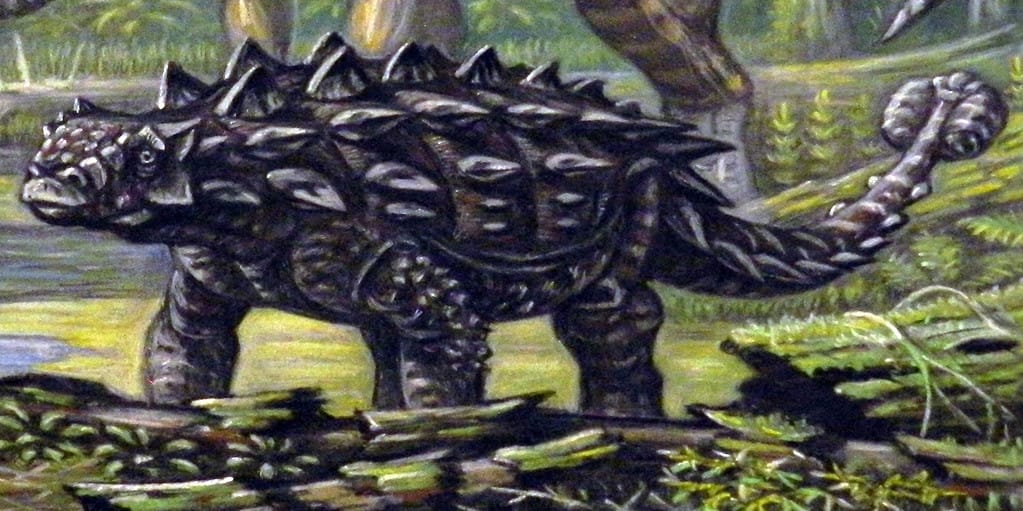
‘s species epithet means “shank destroyer.”
©ABelov2014 (https://abelov2014.deviantart.com/) / CC BY-SA 3.0 – Original / License
Zuul is a genus of ankylosaurine dinosaur from the Campanian age of the Late Cretaceous period. Researchers named the type species Zuul crurivastator in 2017 from fossils found in the Judith River Formation in Montana, USA. It was a quadrupedal herbivore with an estimated length of 6 m (19.7 ft).
Summary of 23 Dinosaurs That Start With Z
| Name | Meaning | Geological Period | Where Found | Year Named |
|---|---|---|---|---|
| 1. Zalmoxes | named after the Dacian deity Zalmoxis | Late Cretaceous | Transylvania, Romania | 2003 |
| 2. Zanabazar | named after Öndör Gegeen Zanabazar | Late Cretaceous | Mongolia | 2009 |
| 3. Zapalasaurus | “Zapala lizard” | Early Cretaceous | Argentina | 2006 |
| 4. Zapsalis | “thorough scissors” | Late Cretaceous | Canada | 1876 |
| 5. Zaraapelta | “hedgehog shield” | Late Cretaceous | Mongolia | 2014 |
| 6. Zby | named after Georges Zbyszewski | Late Jurassic | Portugal | 2014 |
| 7. Zephyrosaurus | “west wind lizard” | Early Cretaceous | Montana, USA | 1980 |
| 8. Zhanghenglong | “Zhang Heng’s dragon” | Late Cretaceous | China | 2014 |
| 9. Zhejiangosaurus | “Zhejiang lizard” | Late Cretaceous | China | 2007 |
| 10. Zhenyuanlong | “Zhenyuan’s dragon” | Early Cretaceous | China | 2014 |
| 11. Zhongjianosaurus | “Zhongjian lizard” | Early Cretaceous | China | 2017 |
| 12. Zhongyuansaurus | “Zhongyuan lizard” | Early Cretaceous | China | 2007 |
| 13. Zhuchengceratops | “Zhucheng horned face” | Late Cretaceous | China | 2010 |
| 14. Zhuchengtitan | “Zhucheng titan” | Late Cretaceous | China | 2017 |
| 15. Zhuchengtyrannus | “Zhucheng tyrant” | Late Cretaceous | China | 2011 |
| 16. Ziapelta | “Zia shield” | Late Cretaceous | New Mexico, USA | 2014 |
| 17. Zigongosaurus | “Zigong Lizard” | Mid-Late Jurassic | China | 1976 |
| 18. Zizhongosaurus | “Zizhong lizard” | Early Jurassic | China | 1983 |
| 19. Zuniceratops | “Zuni horned face” | Late Cretaceous | New Mexico, USA | 1998 |
| 20. Zuolong | “Zuo’s dragon” | Late Jurassic | China | 2010 |
| 21. Zuoyunlong | “Zuoyun dragon” | Late Cretaceous | China | 2015 |
| 22. Zupaysaurus | “devil izard” | Late Triassic | Argentina | 2003 |
| 23. Zuul | named after the character from Ghostbusters | Late Cretaceous | Montana, USA | 2017 |
The photo featured at the top of this post is © Maria Edilma Ayala/Shutterstock.com
Thank you for reading! Have some feedback for us? Contact the AZ Animals editorial team.




